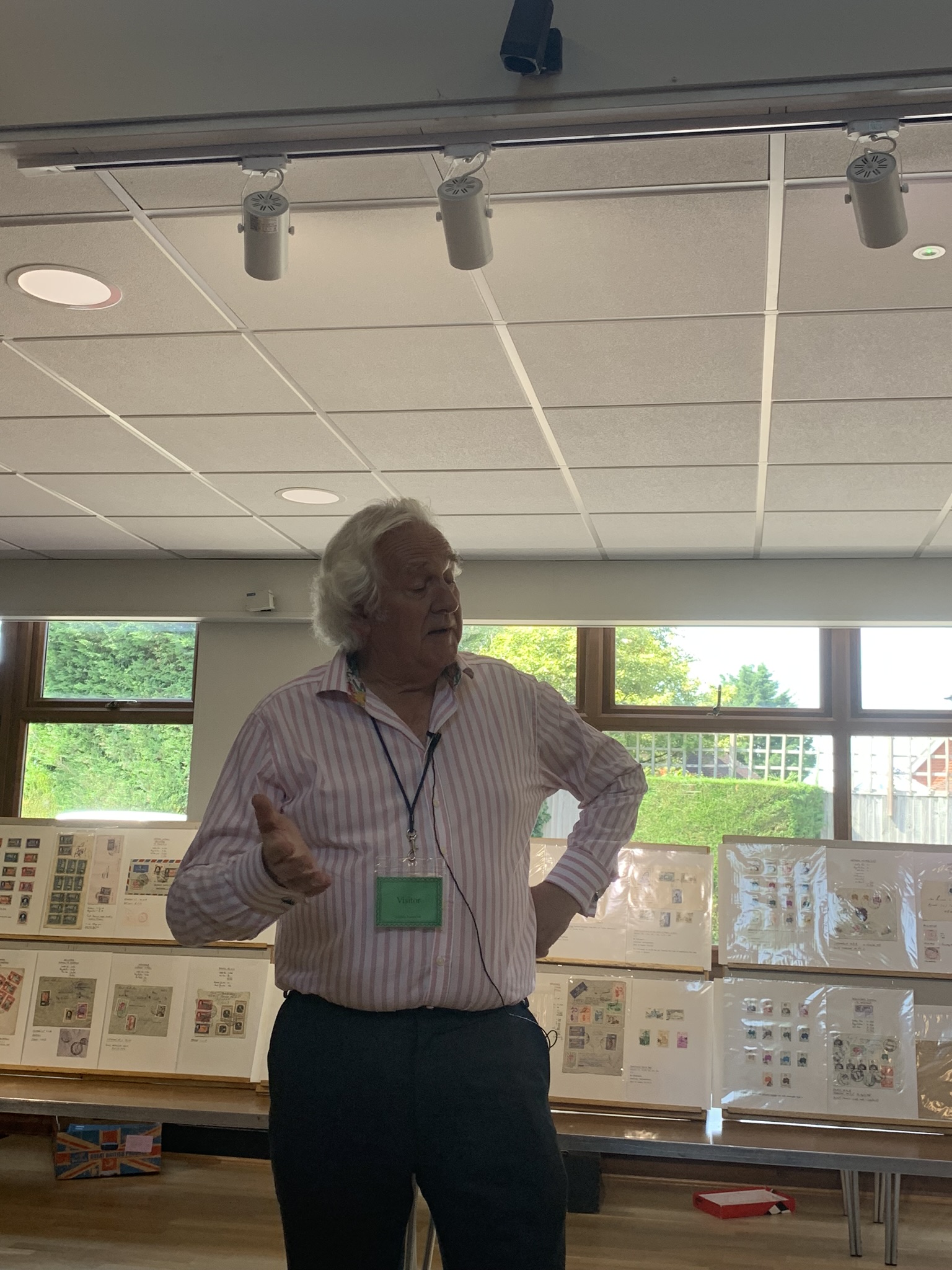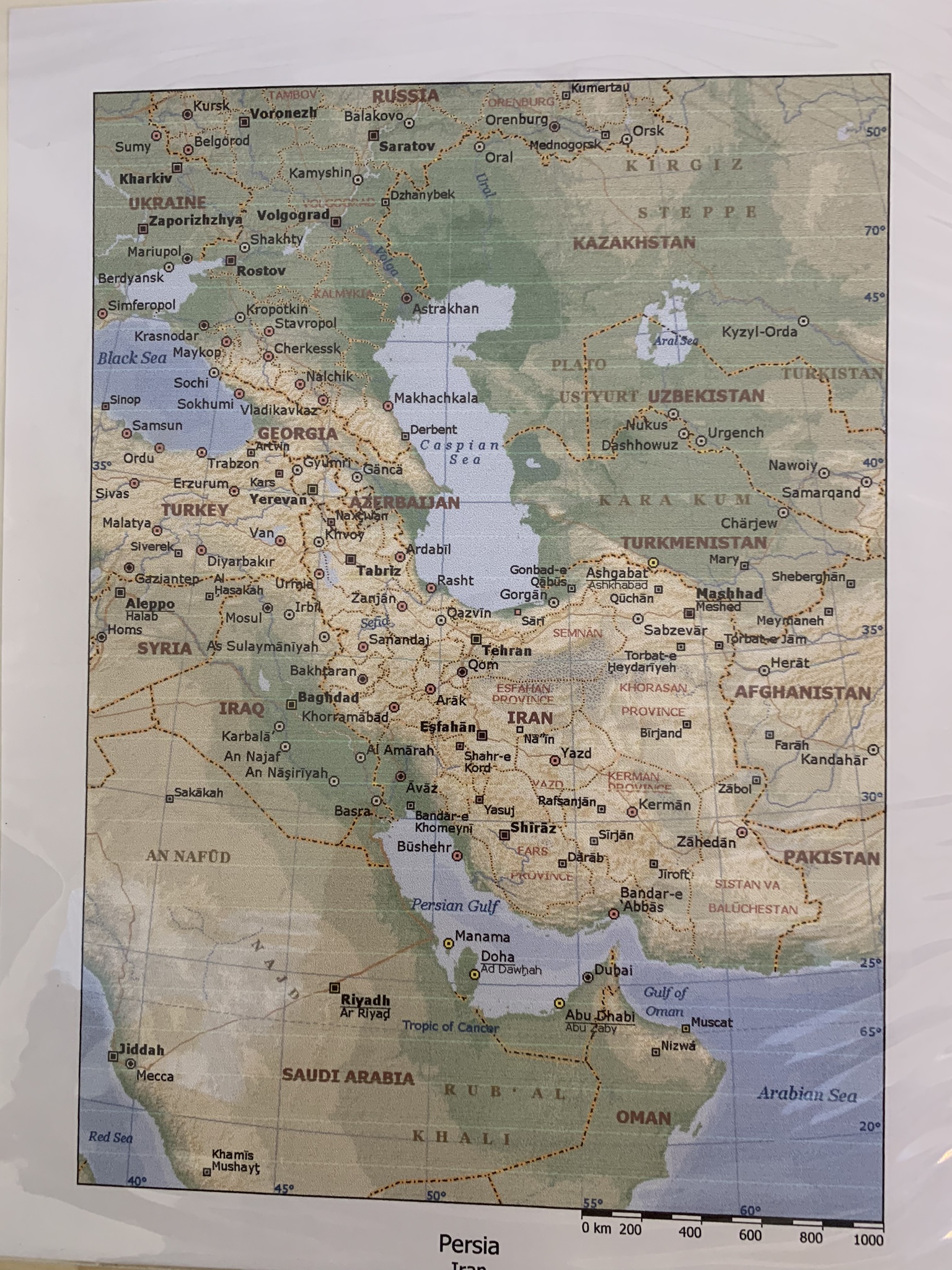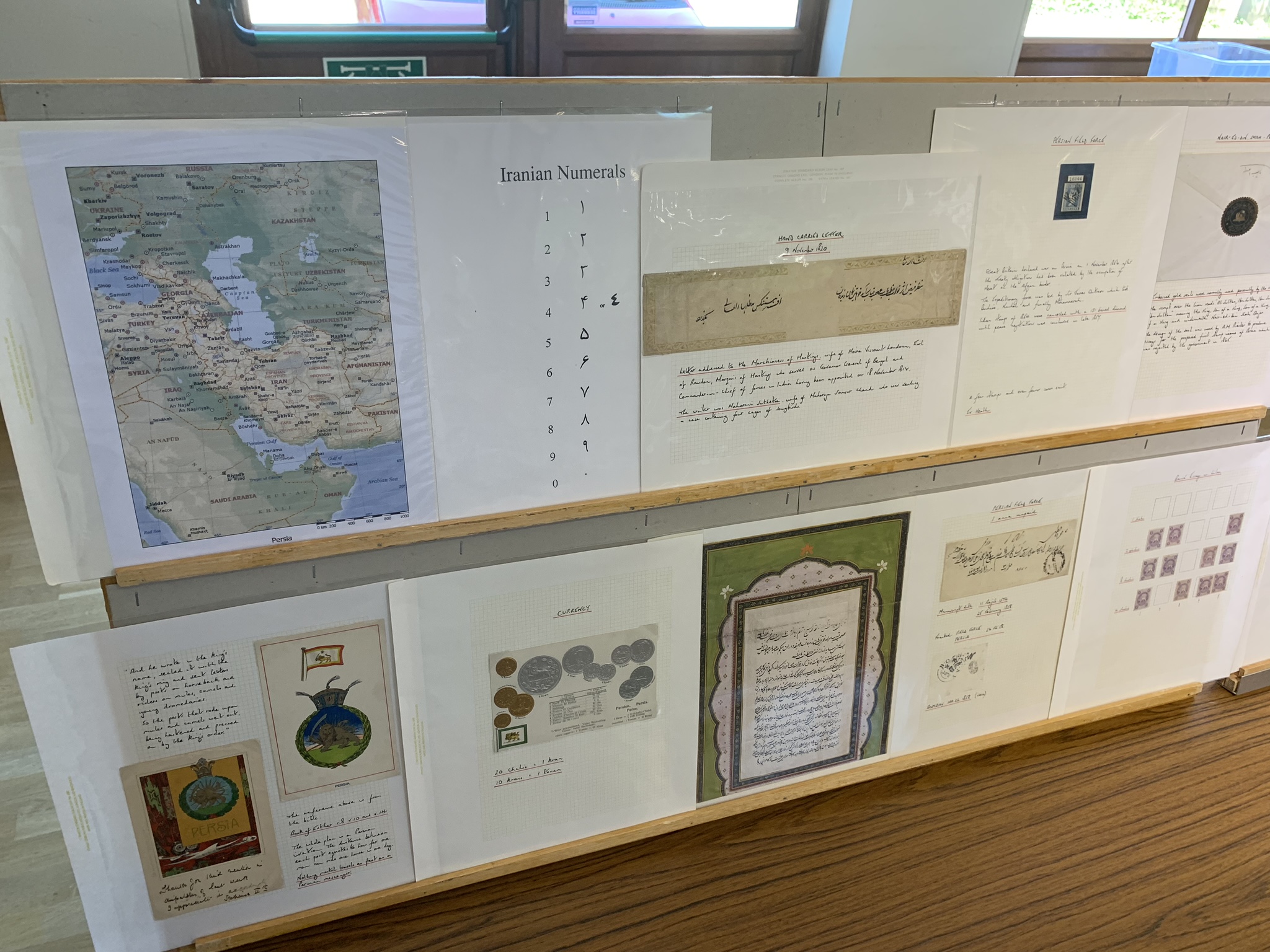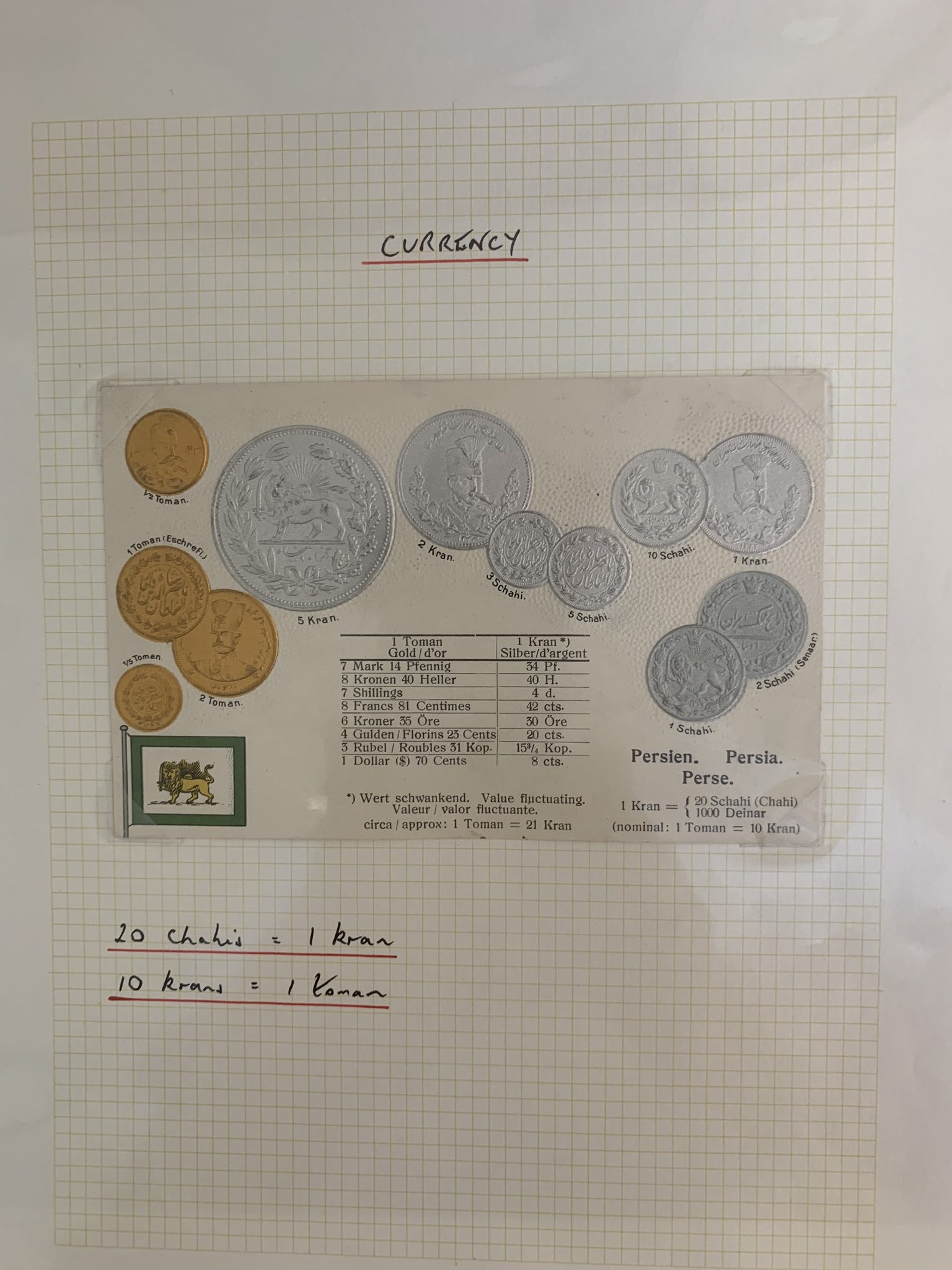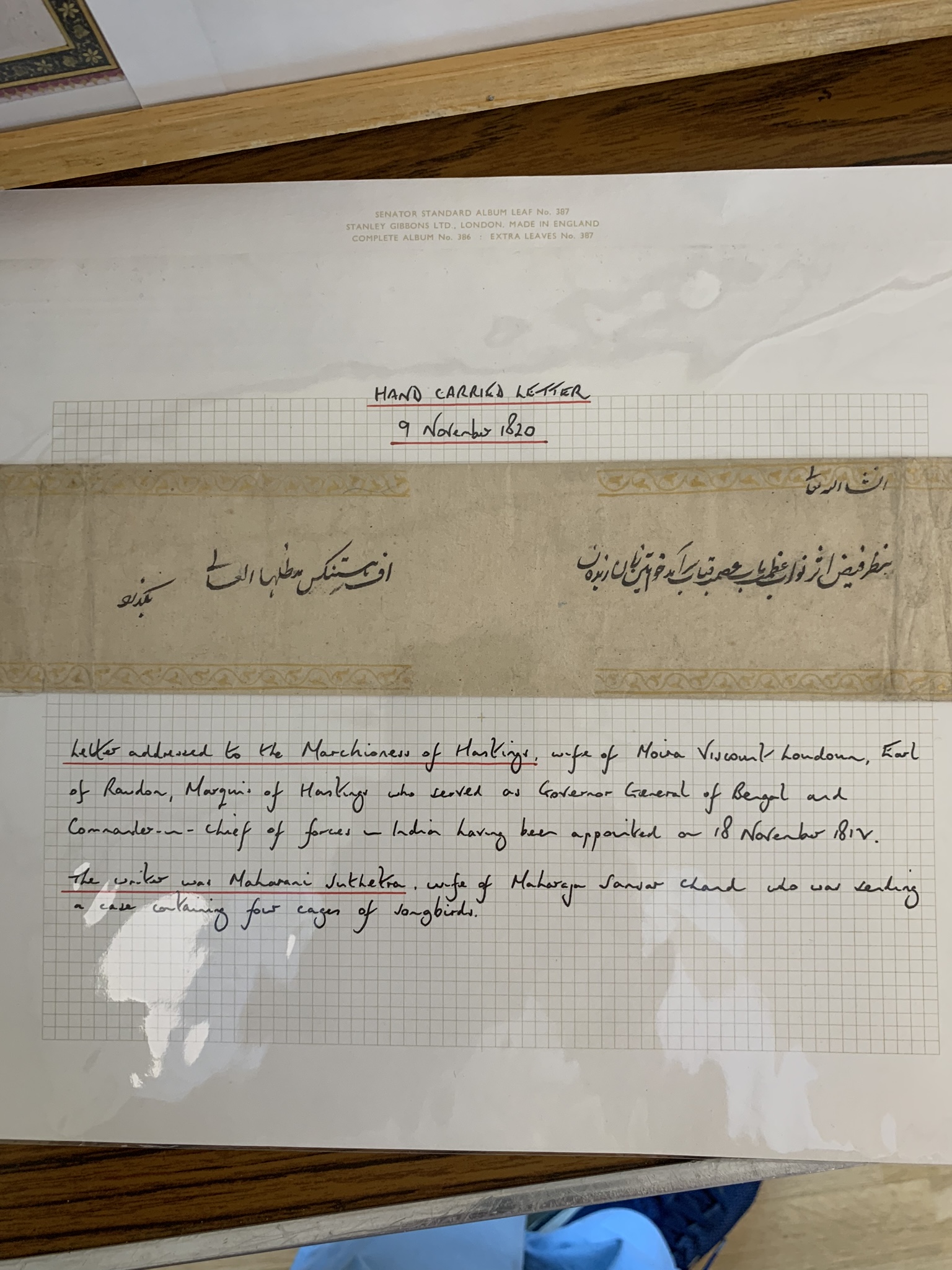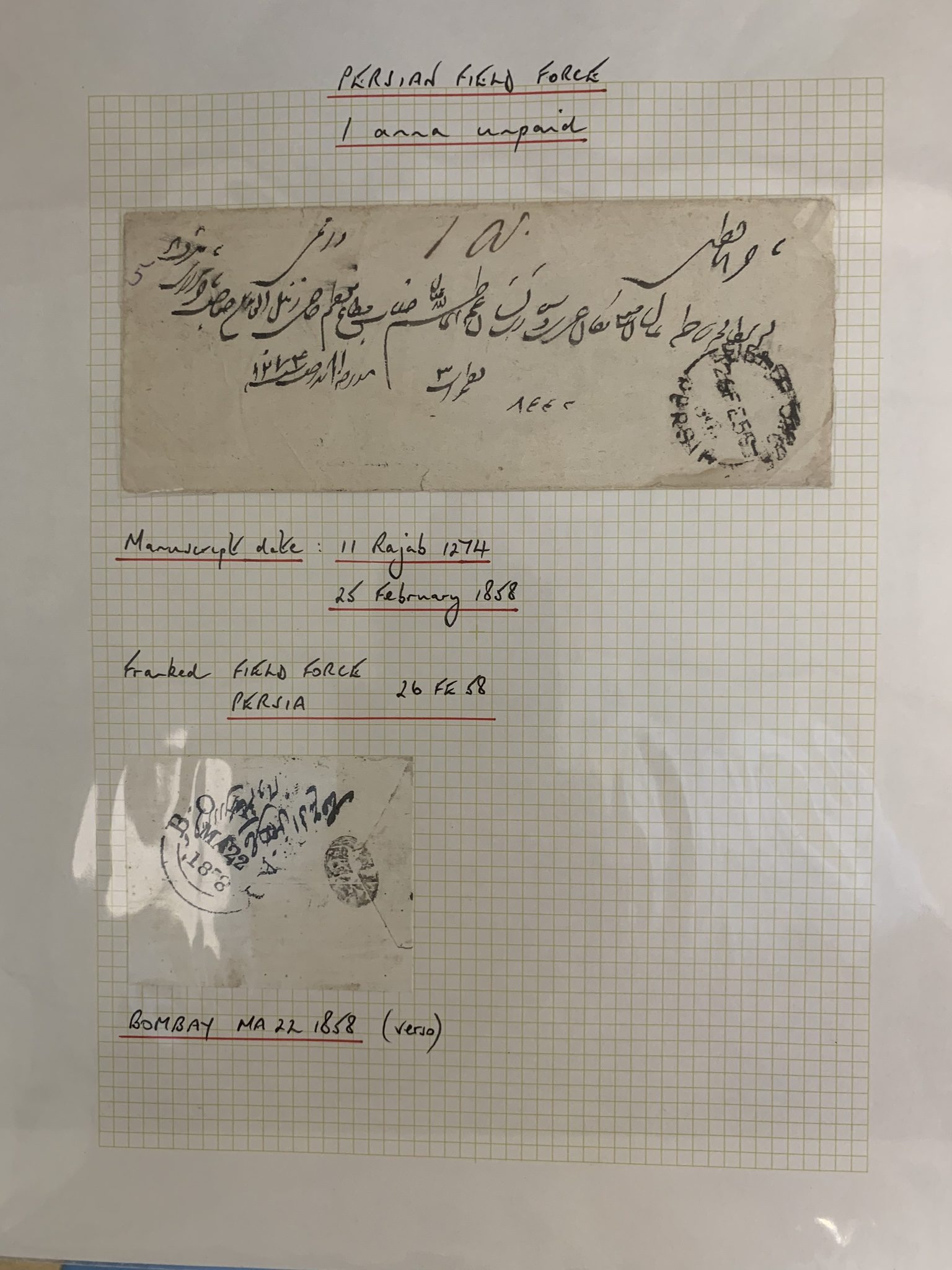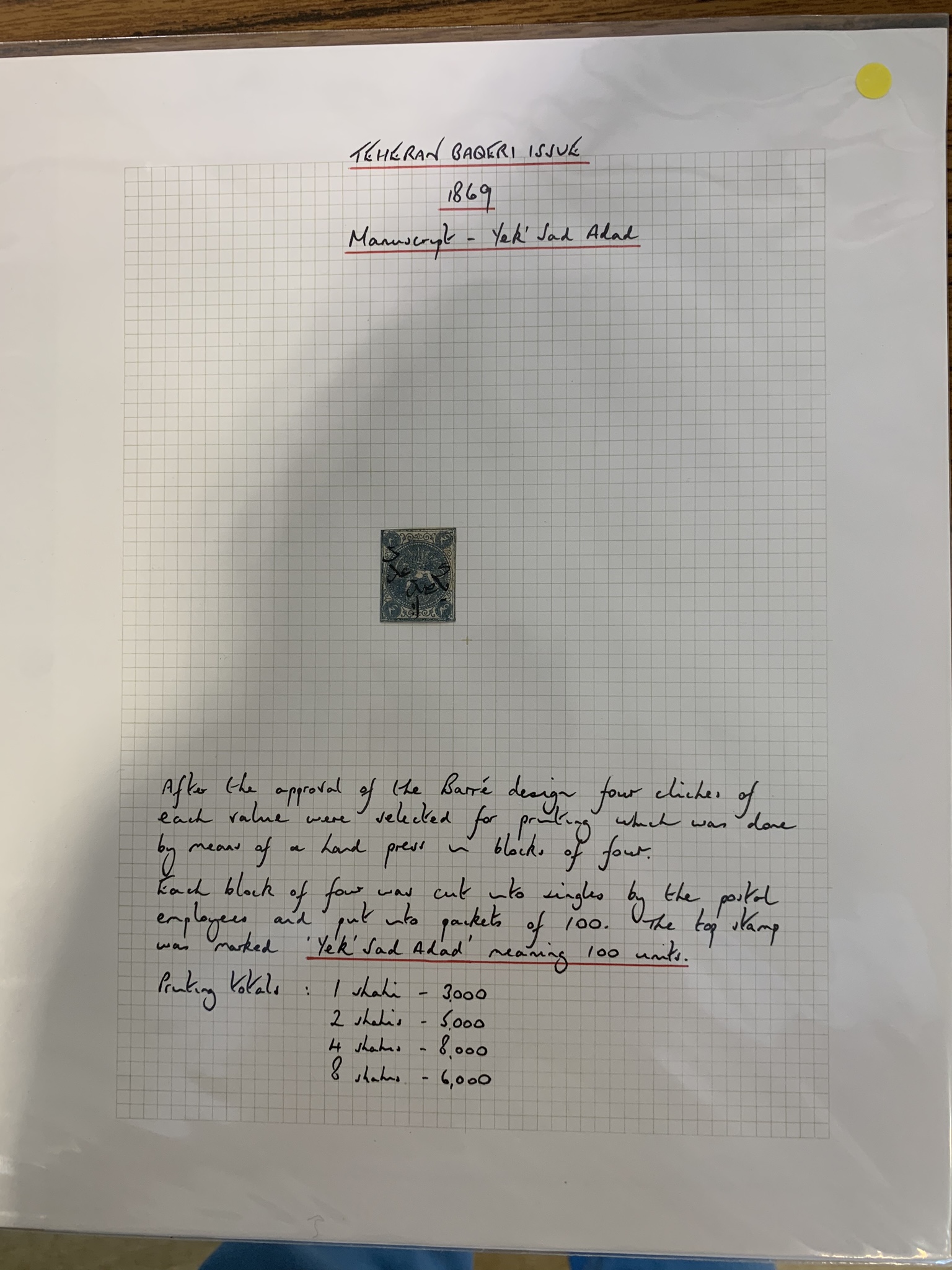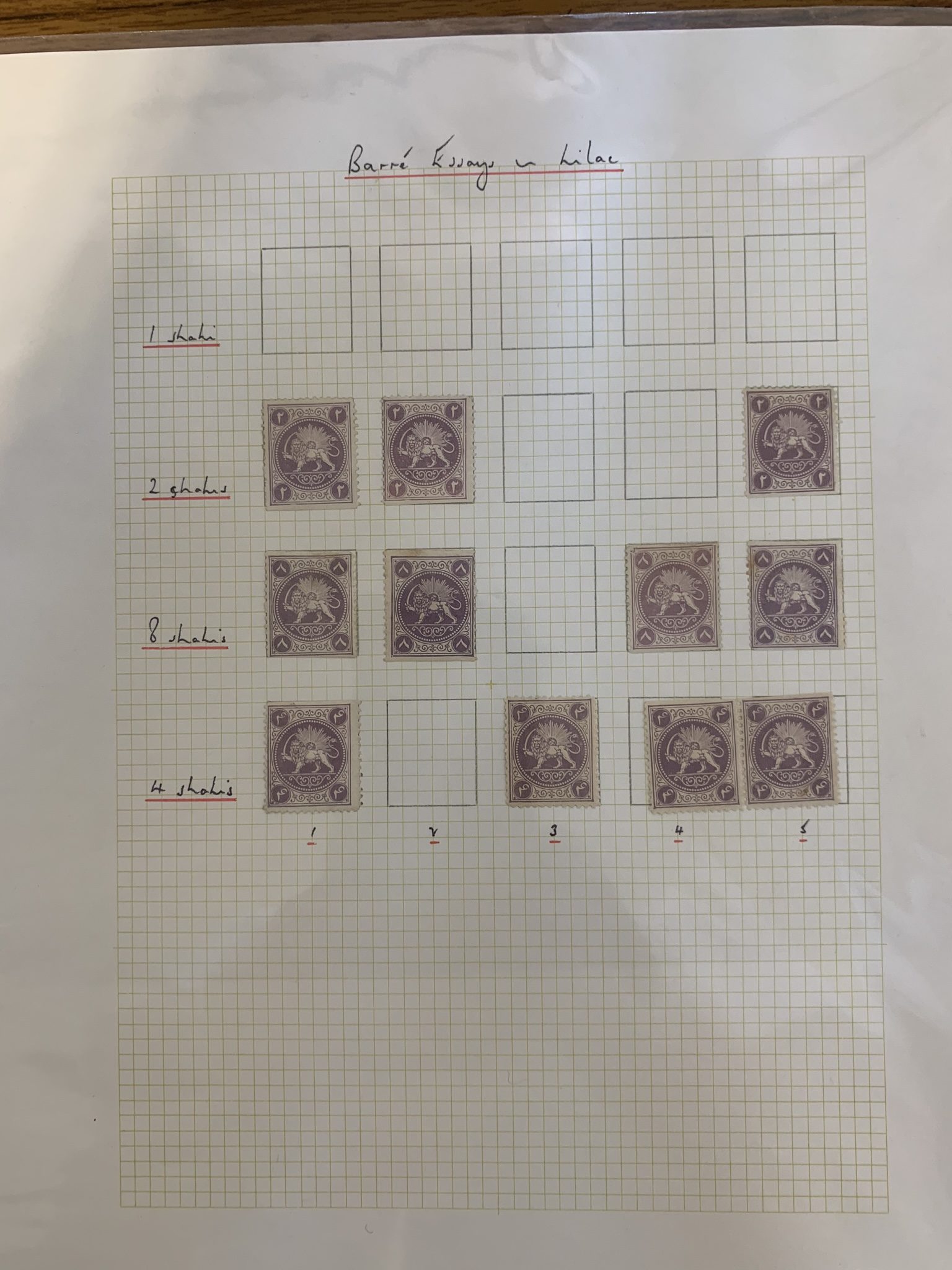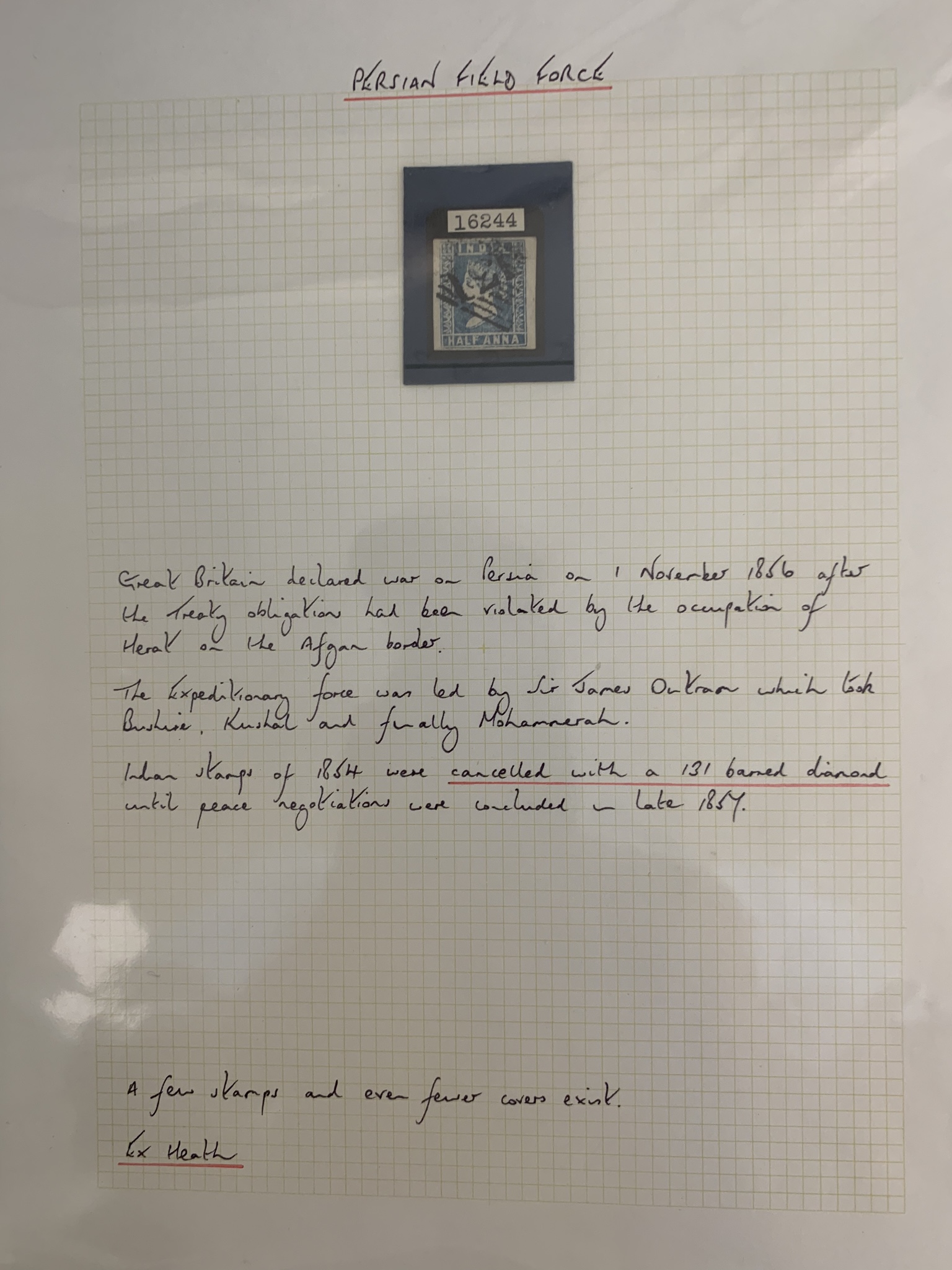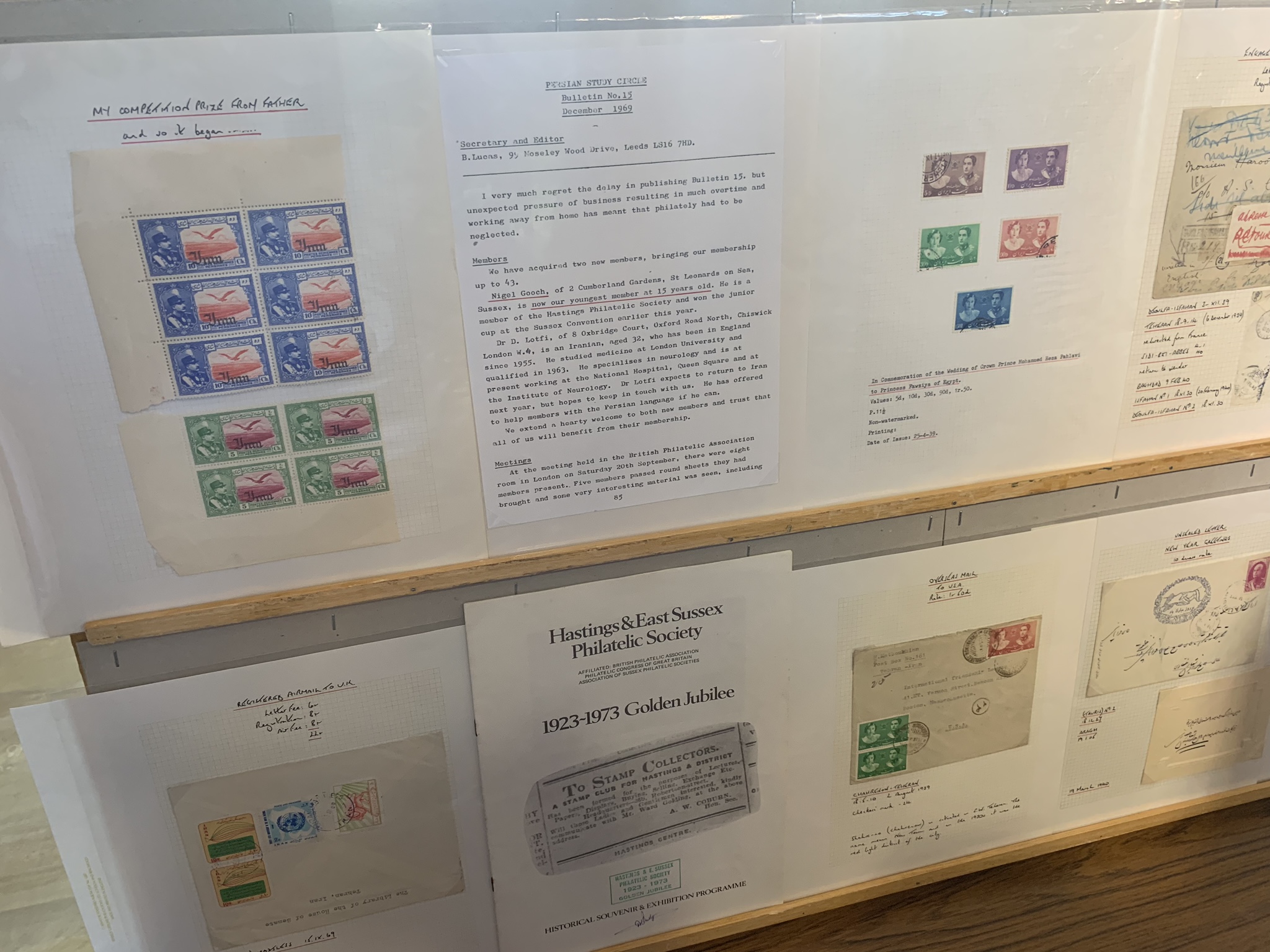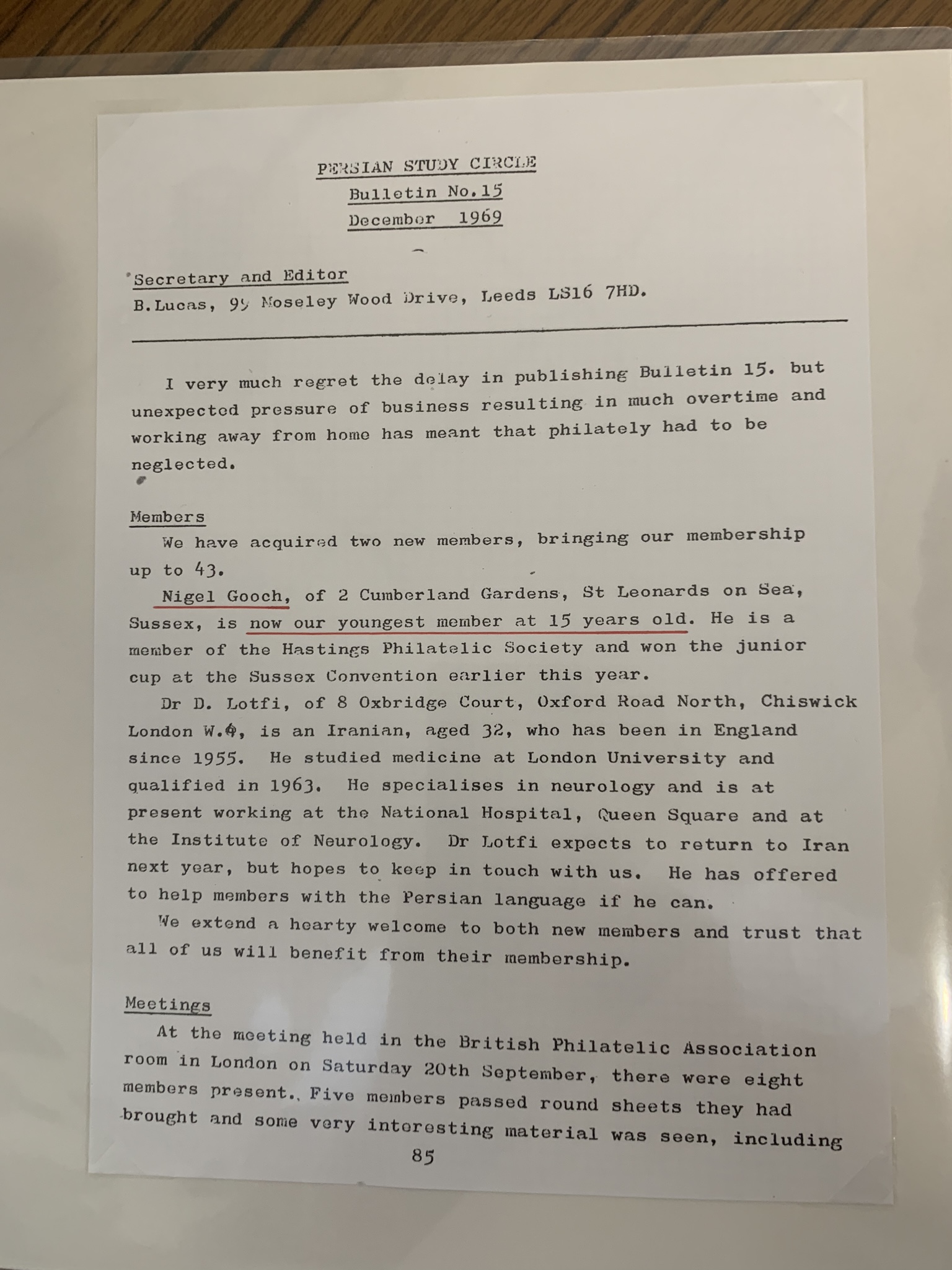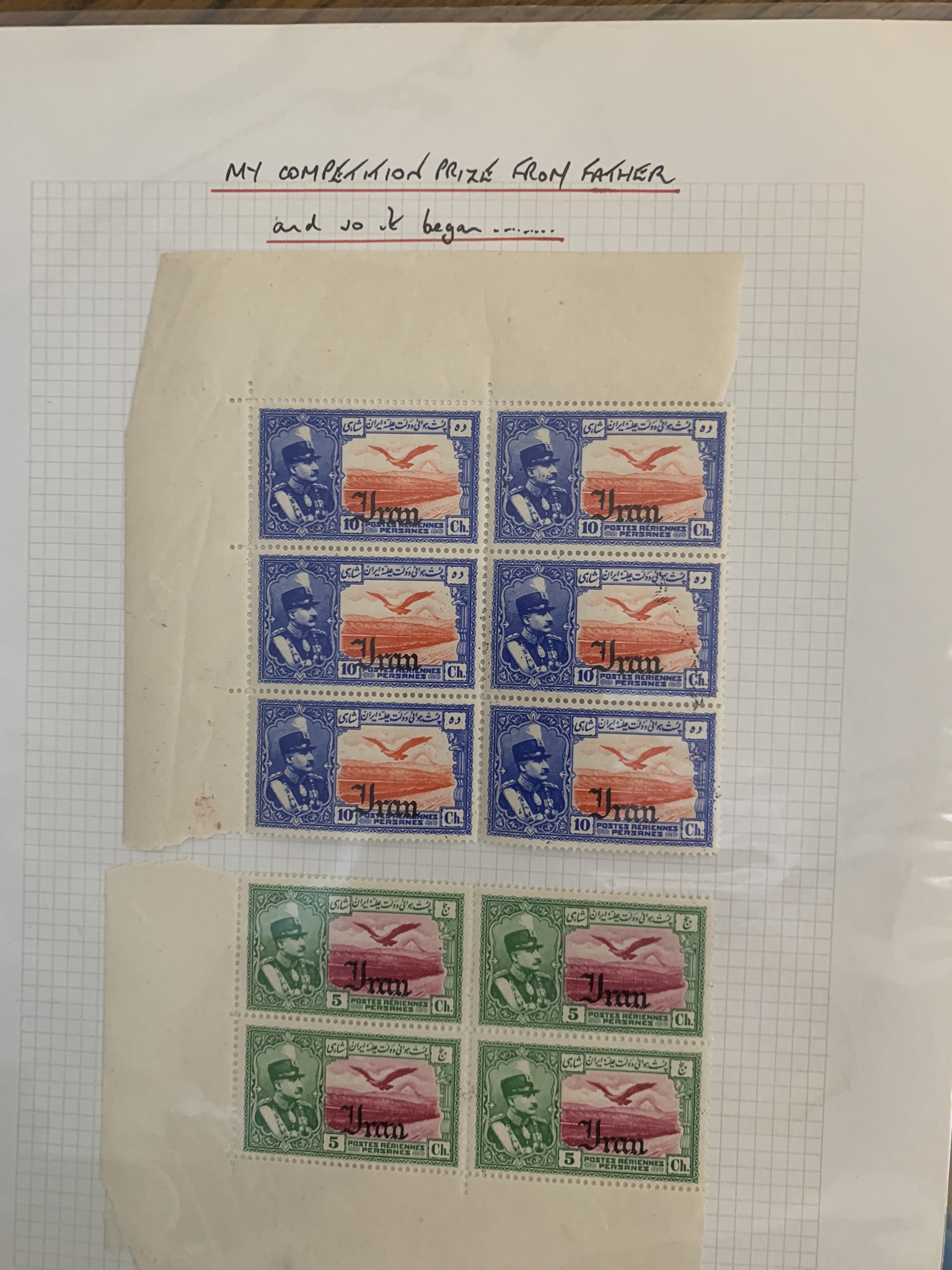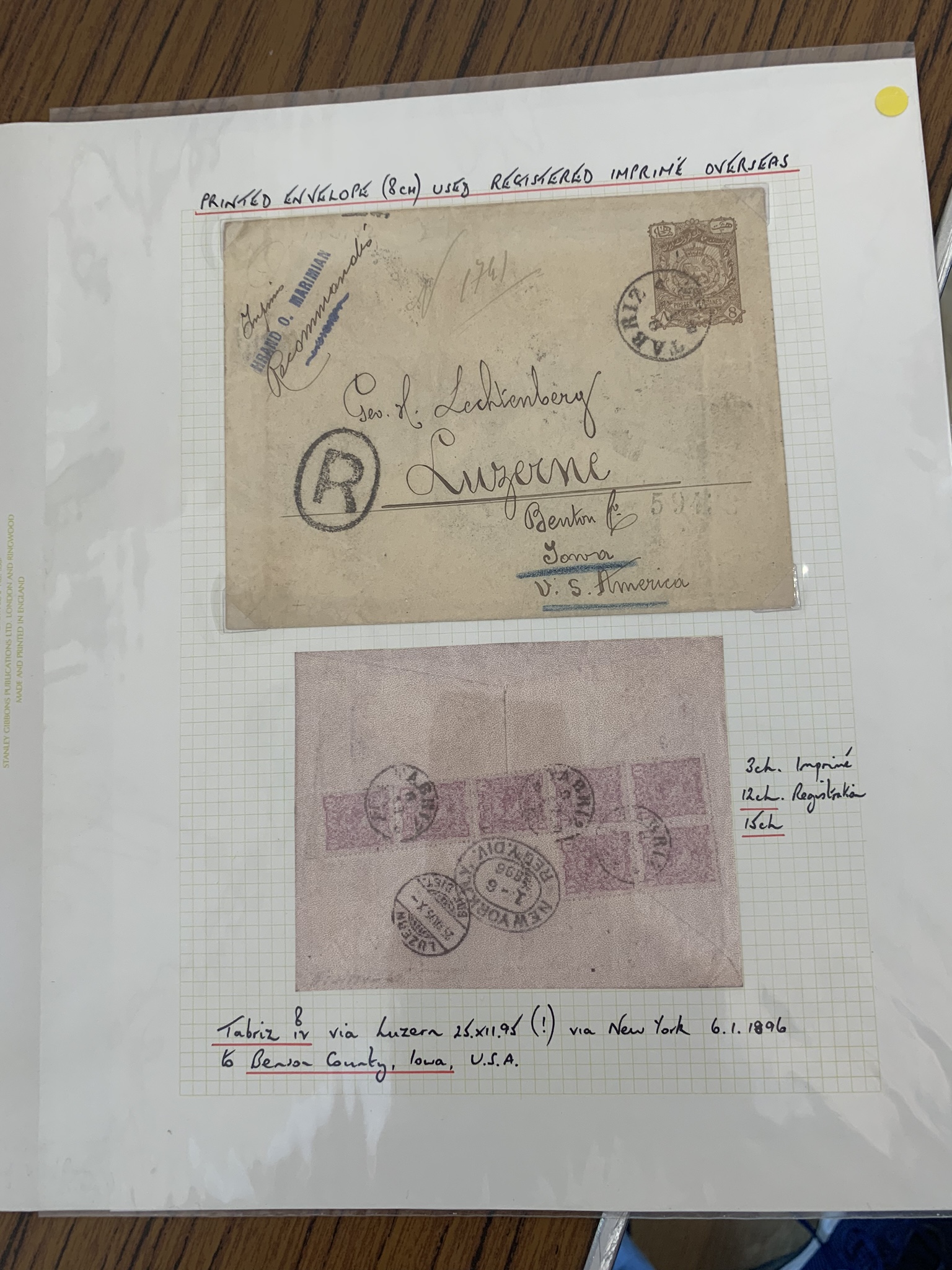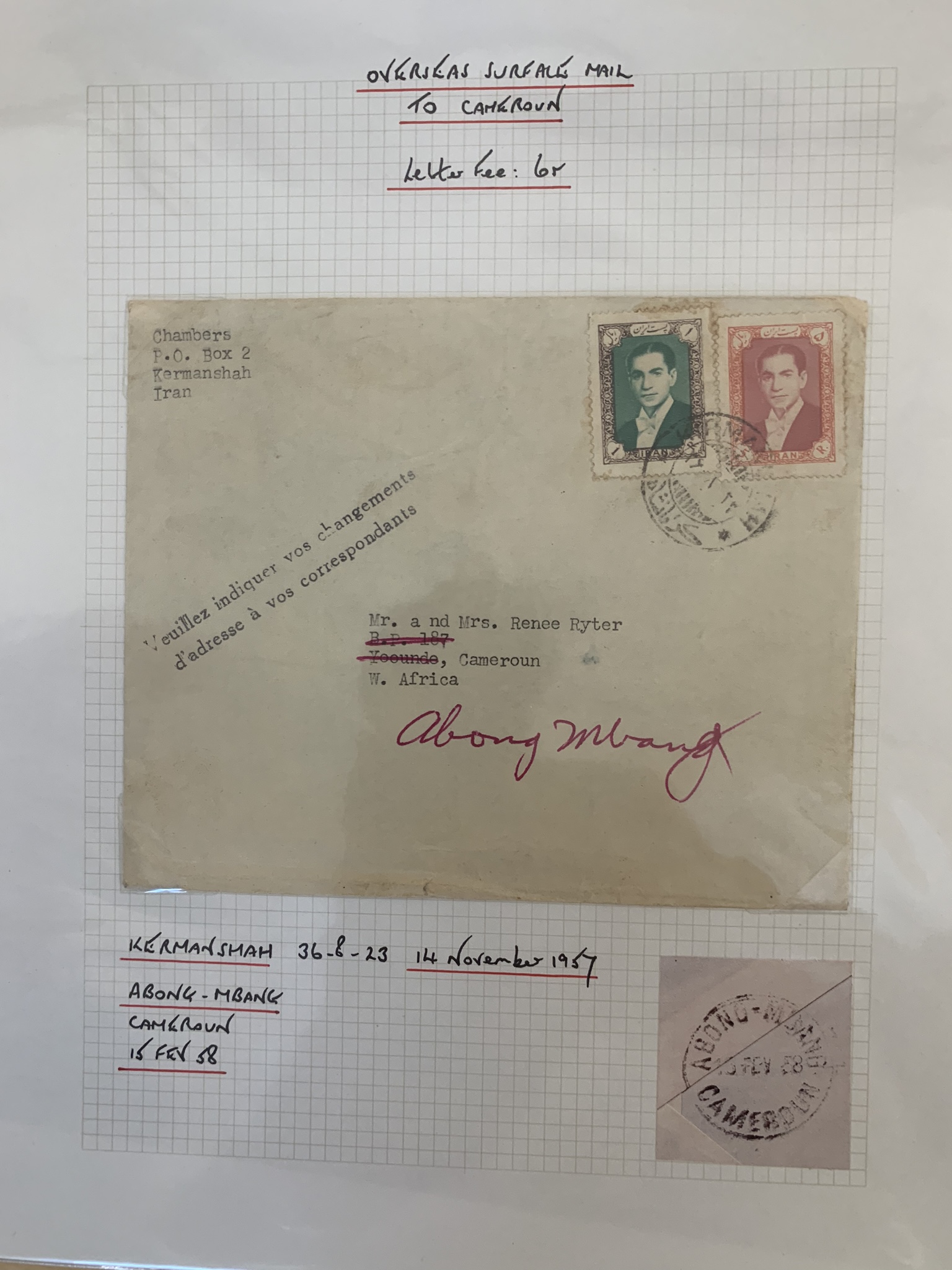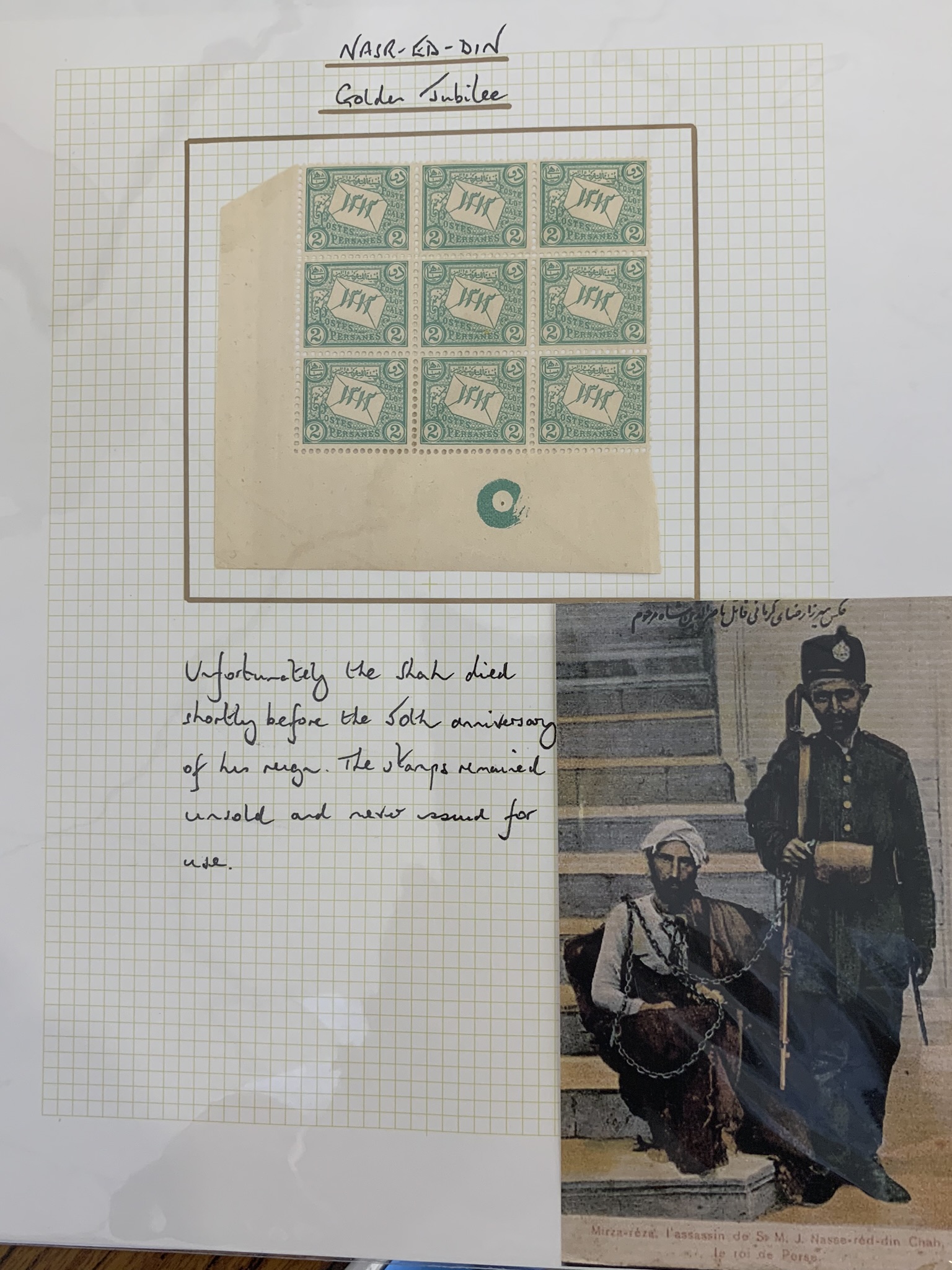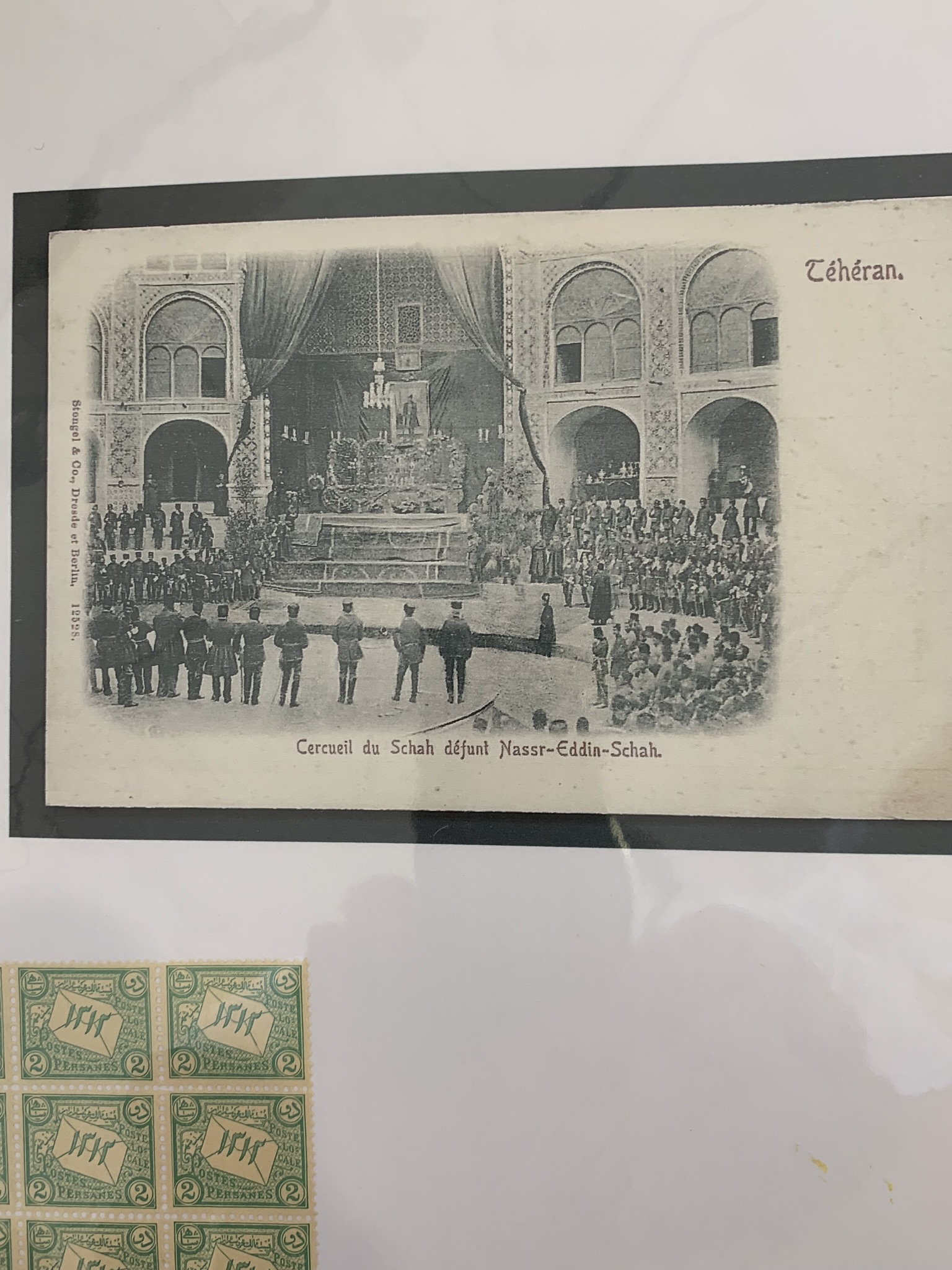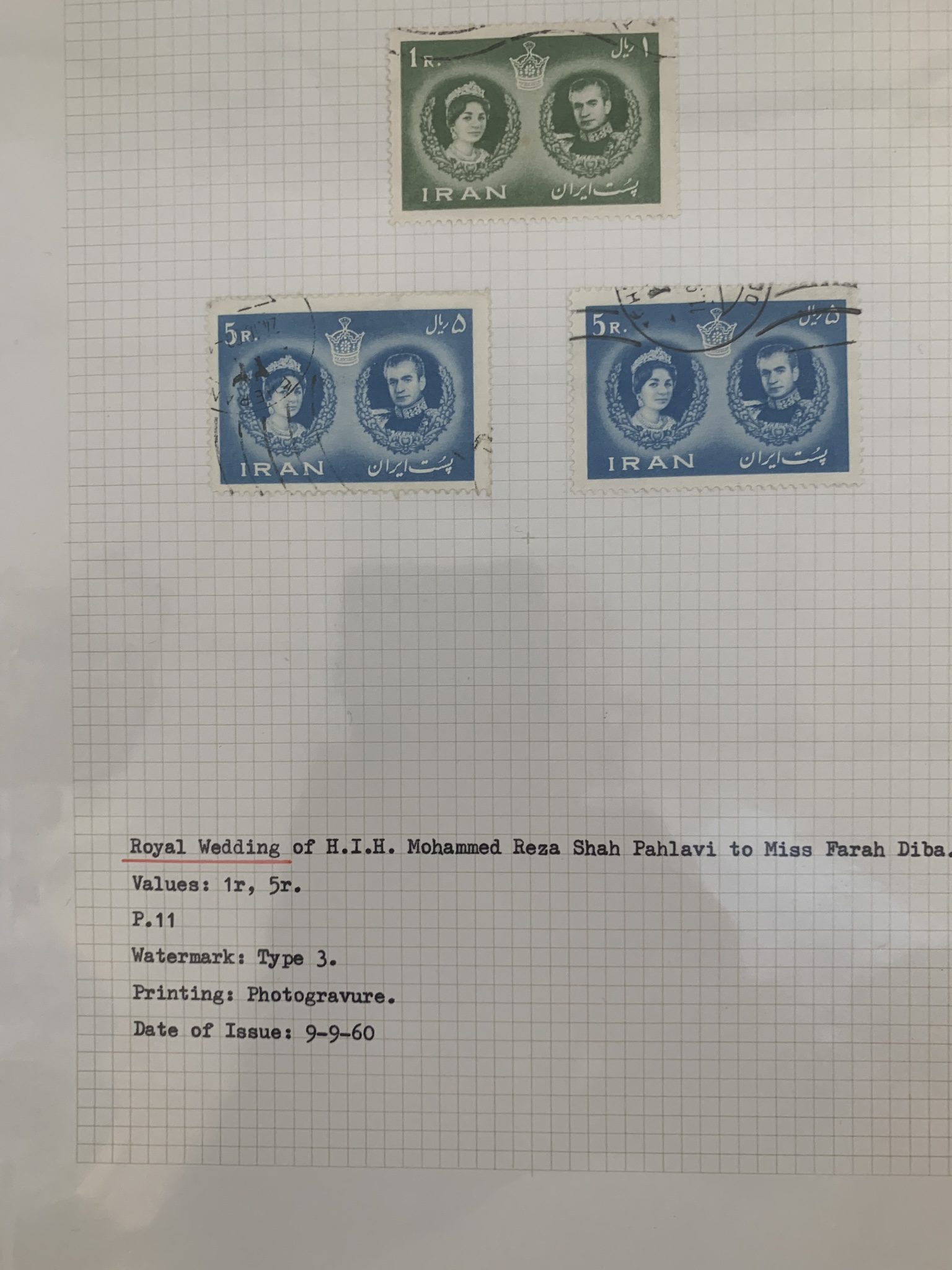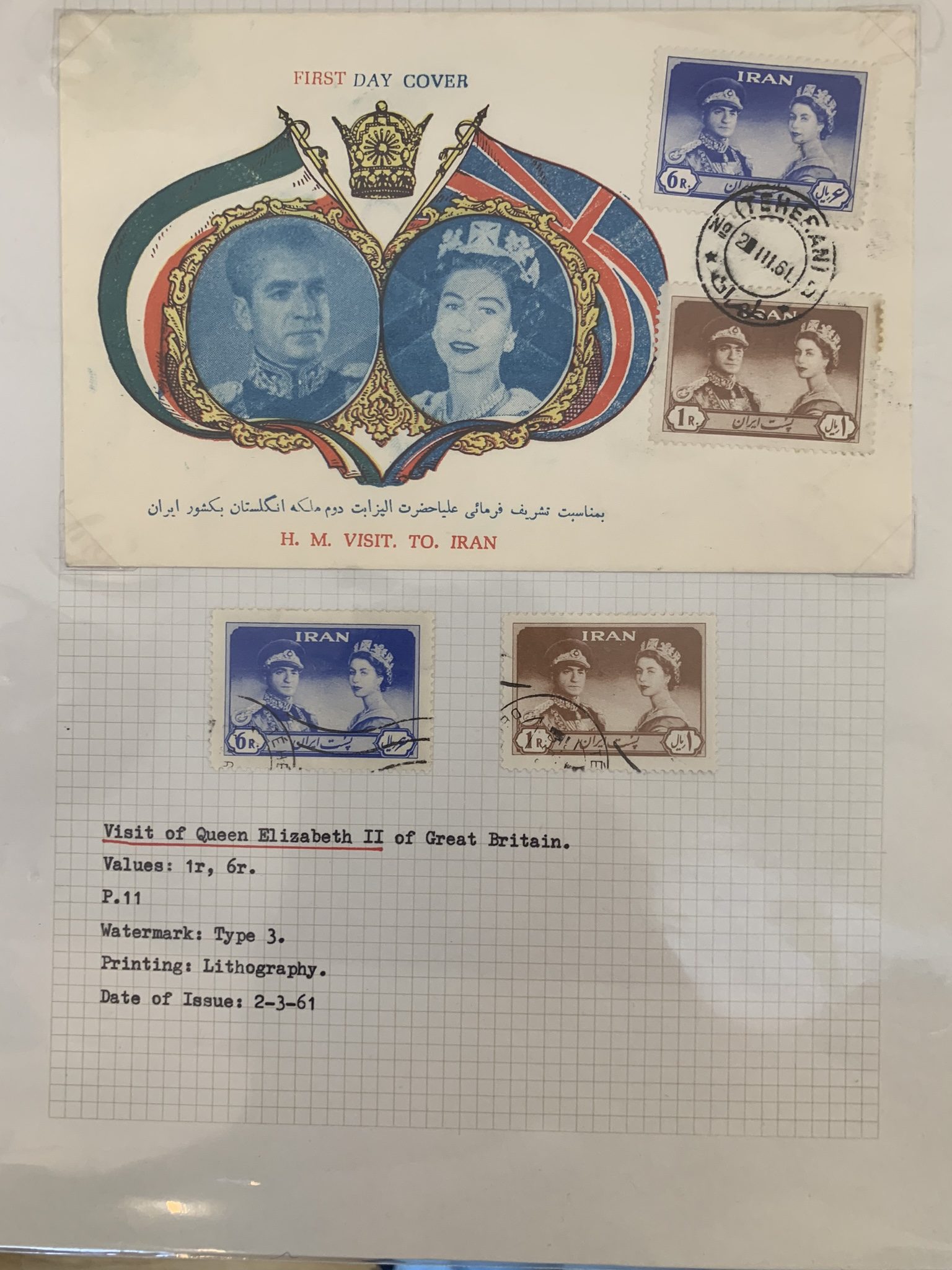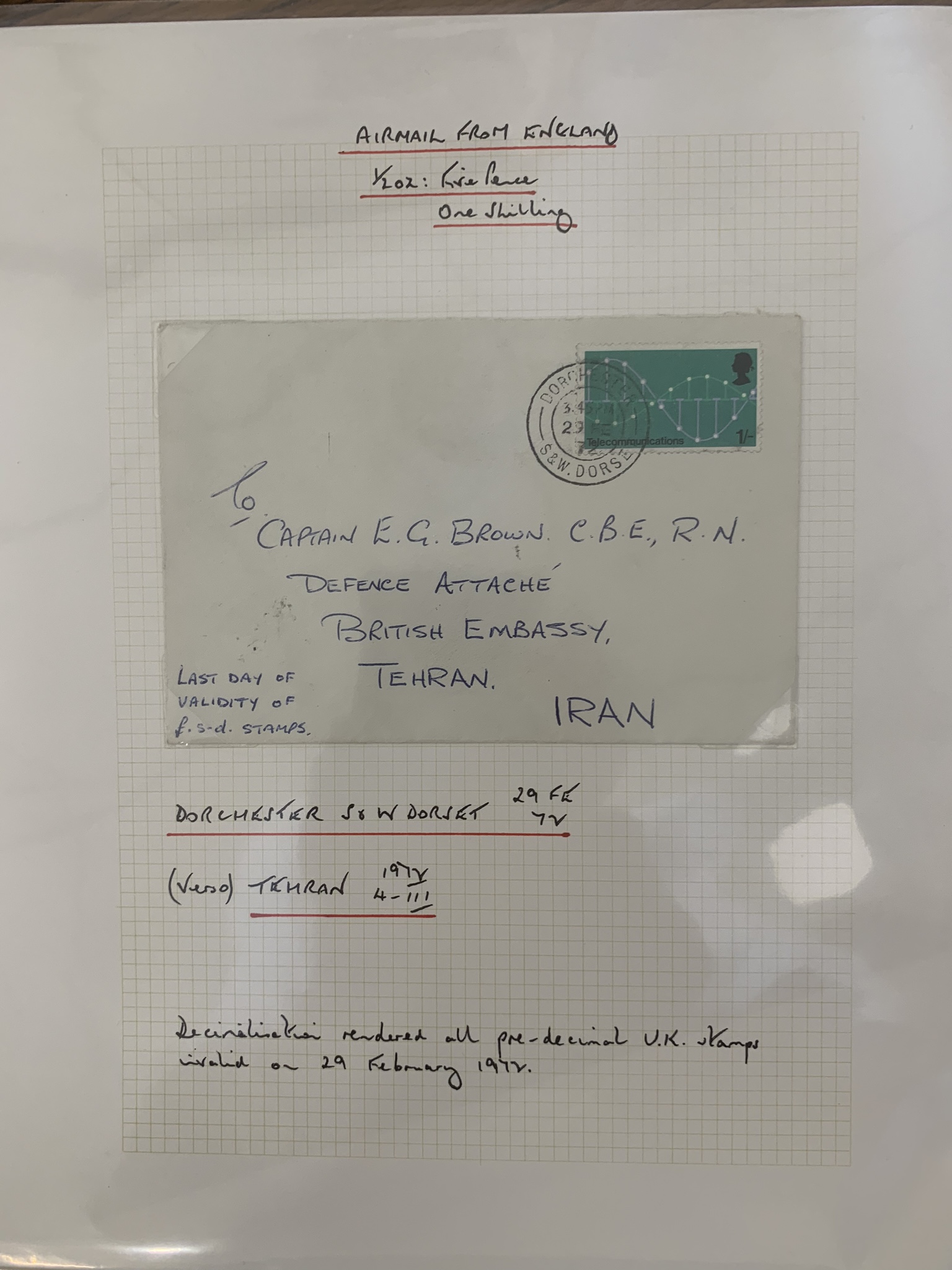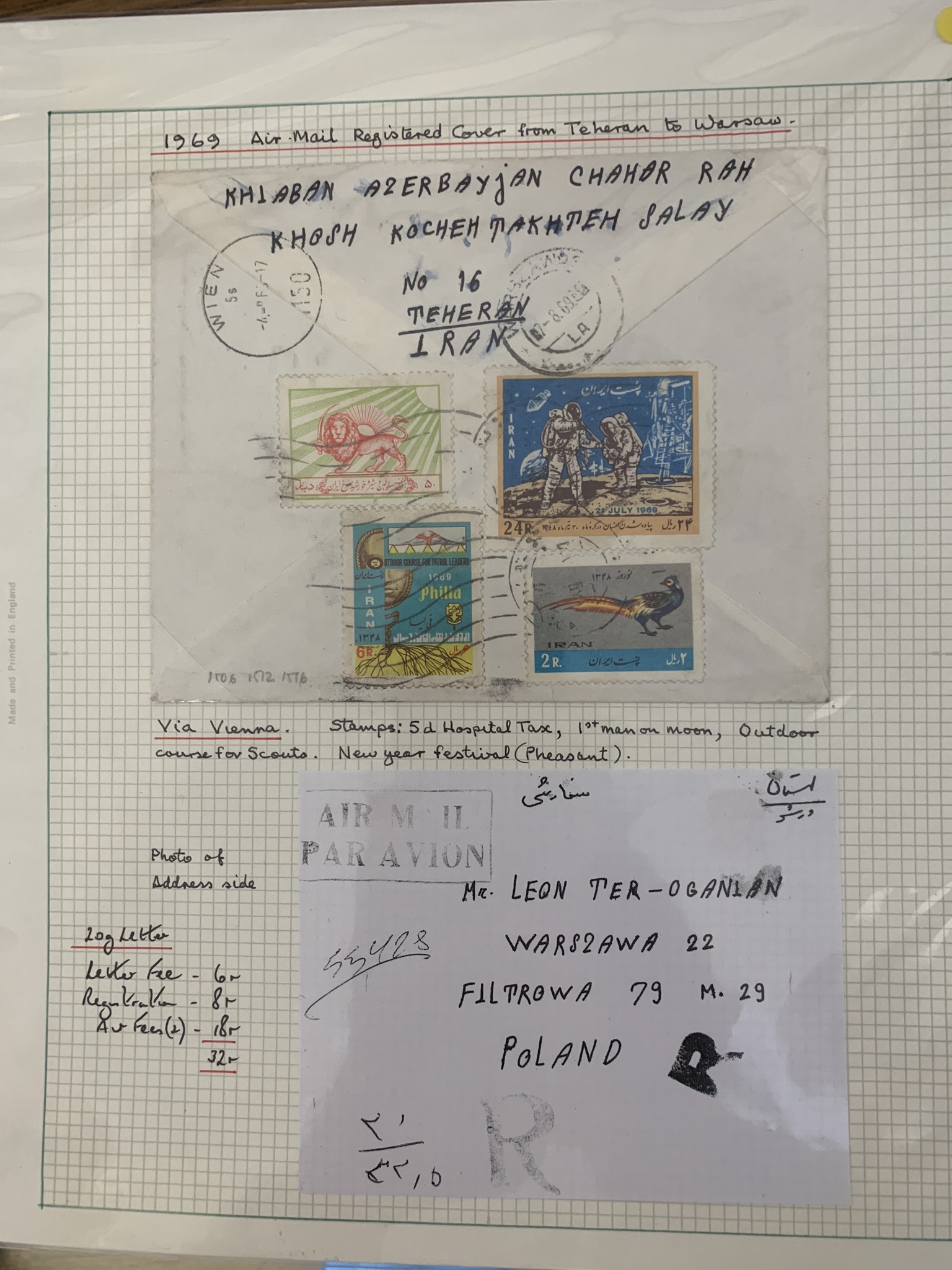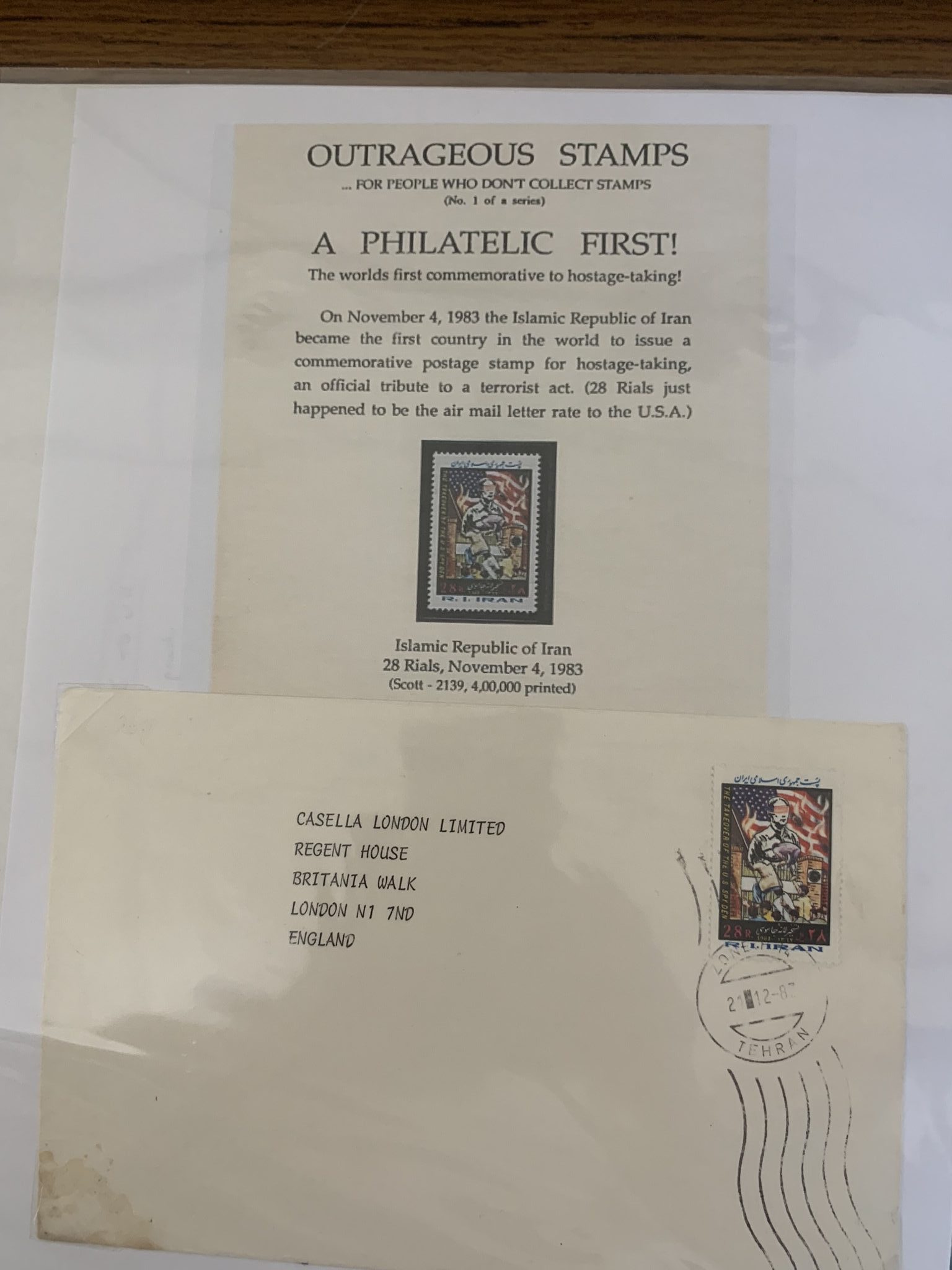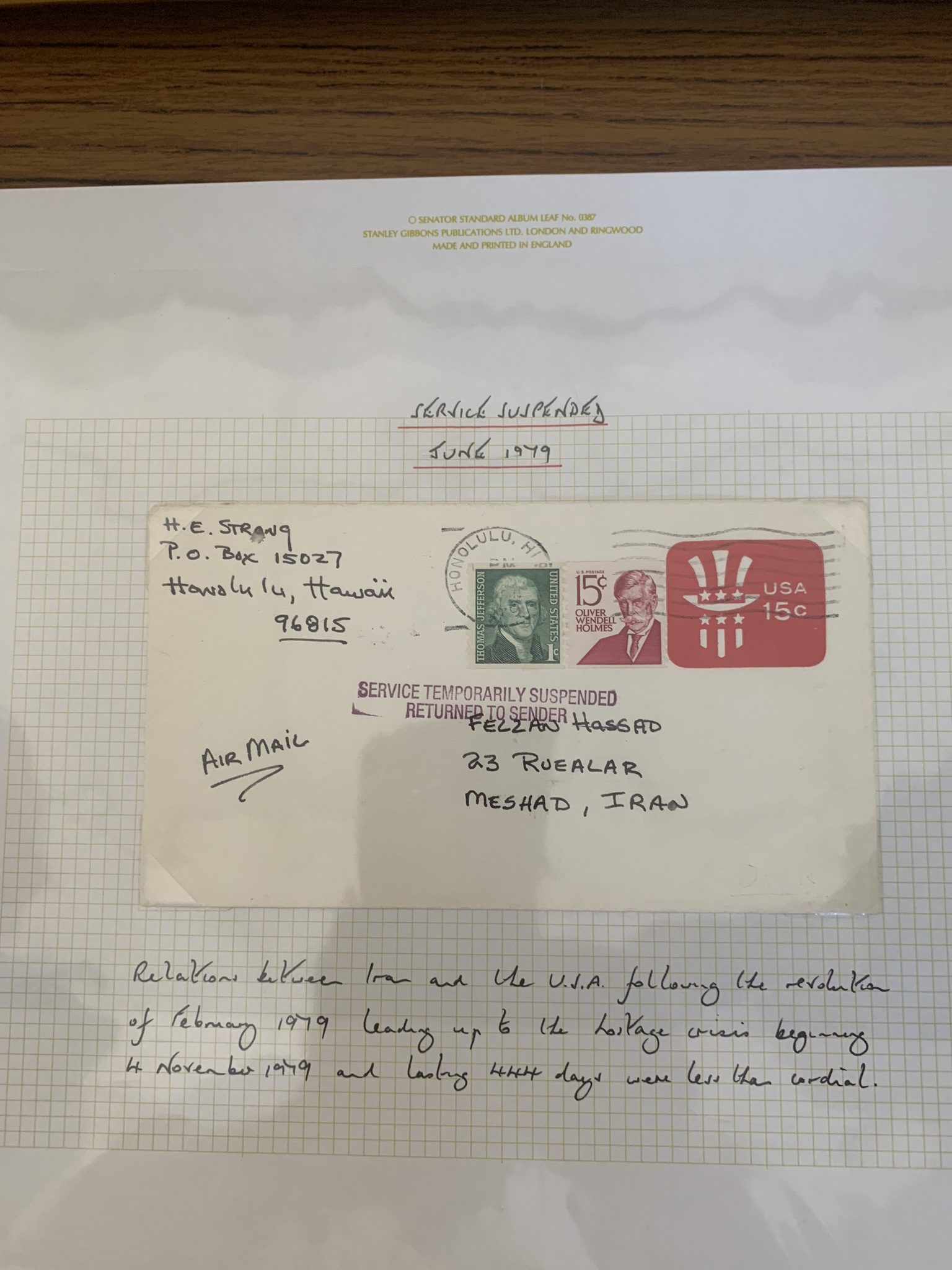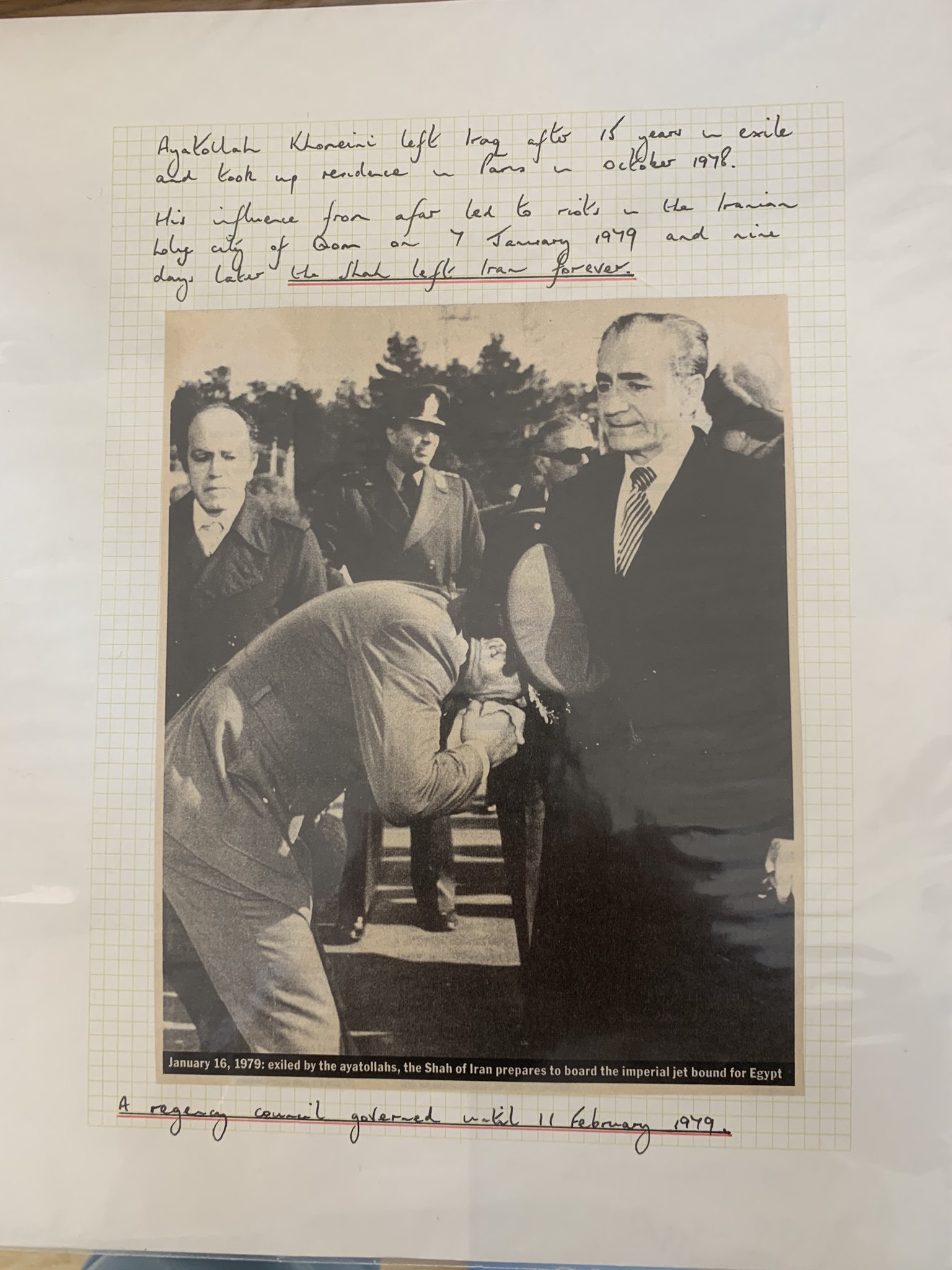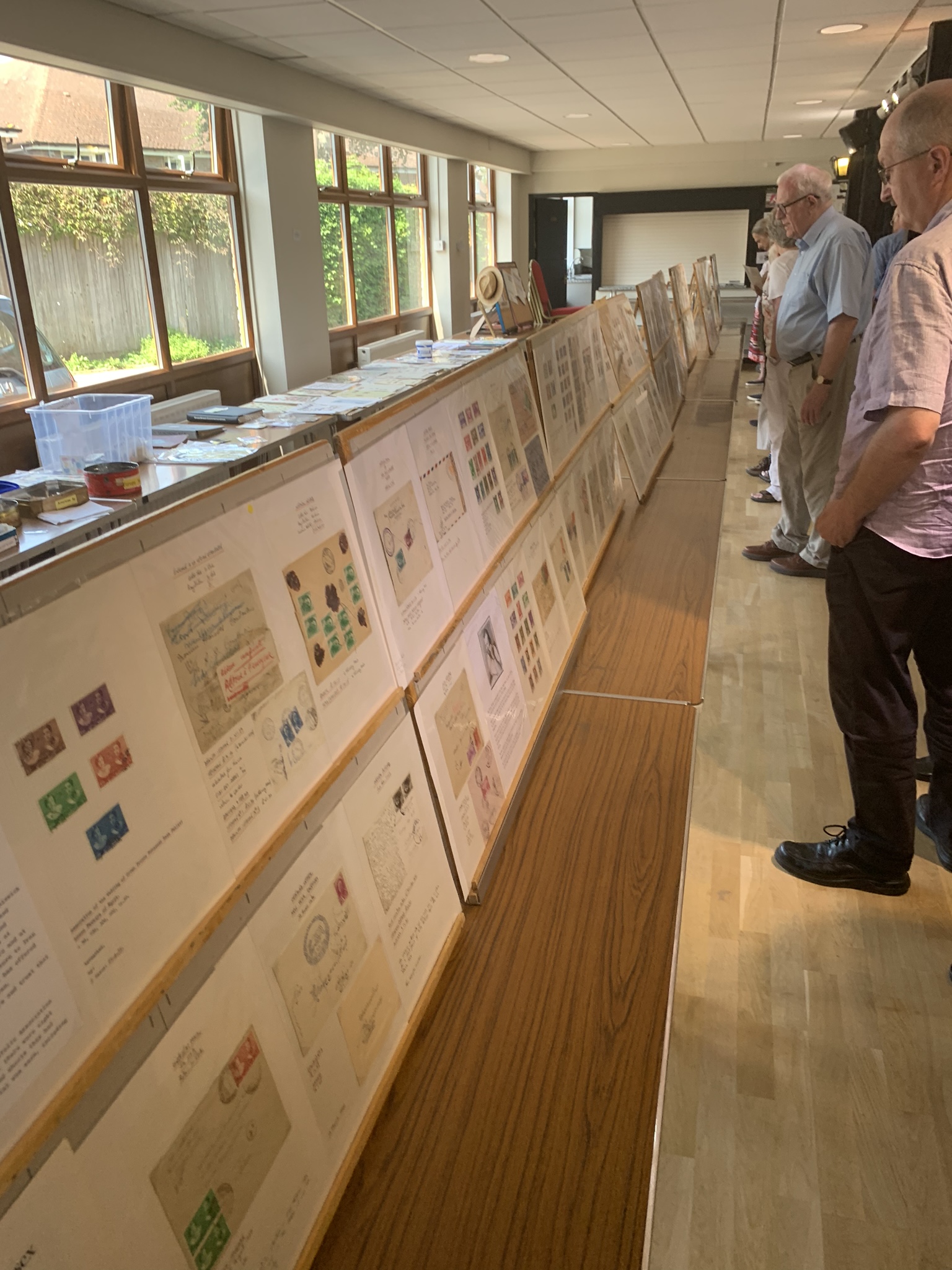It was gratifying to see that 48 people turned up to see Nigel Gooch’s (FRPSL) wonderful display on Persia, considering it was one of the hottest days of the year. The names Iran and Persia are often used interchangeably to mean the same country. Iran is the legal name. Persia, was an ancient kingdom within Iran. Iran came to be known as Persia in the West thanks to classical Greek authors during whose time Persia was the dominant kingdom in Iran. To call all of Iran ‘Persia’, would be like calling all of Britain ‘England’.
Nigel explained that this is the only country that he collects, designed to show the definitive stamps themselves supported by an examination of the various postage rates and usages, both internally and abroad, using wrappers, postcards, envelopes, printed stationery and parcel receipts from the latter part of the 19th century. The earliest item in Nigel’s display was an 1830 pre-stamp letter. Nigel believes that Persia had the earliest postal system. In 550BC Cyrus the Great, ruler of the vast Persian Empire, ascertained how far a horse could travel in one day and then had a series of posting stations built a day’s ride apart. Thus, the first postal system was born, with the night messenger relieving the day messenger until the communication was delivered.
Naser al-Din Shah Qajar was the King of Persia from September 1848 to May 1896 when he was assassinated. The first stamps for Persia were printed in 1869 featuring the symbol of the country, the “Lion of Persia”. The lion design stamps were originally issued in blocks of four, then strips of four before reverting to blocks. The subsequent definitive issues show the Lion on the lower values with the higher values featuring the Shah’s portrait.
A postmaster who disliked the officially produced stamps decided to design and print his own and sell them. We were shown examples, but their use was soon outlawed. We also saw Postage Due stamps that were printed but never used.
After Naser al-Din Shah Qajar died in 1896, he was succeeded by Mozaffar ad-Din Shah Qajar (1853-1907), and stamps were printed with his portrait.
Towards the end of the 19th century the Post Office was privatised, but this only lasted for a year. The existing stamps were overprinted to reflect the change. When the Post Office was re-nationalised, the stamps were reprinted on green paper. Eventually, the Post Office printed their own stamps, which Nigel likened to bus tickets!
The second half of the evening was devoted to illustrating the many and varied aspects of collecting Iran focussing on Nigel’s personal choice of items from the period 1939 to 1982 that he had collected over a period of 50 years. At the beginning of the second part, Nigel was originally introduced to the material when he was a boy, by pulling out discarded envelopes from his father’s waste paper basket. Besides collecting material from his father’s bin, which gave him much commercially used material, Nigel recounted some of his personal collecting history. At the age of 13 he won the Junior Sussex Cup with an exhibit of Wildings, but his father persuaded him to collect Iran. He had help from, and learned a great deal from, the late Bernard Lucas FRPSL (1931-2018). Nigel is a member of the Iran Philatelic Study Circle, of which Bernard Lucas was the President.
The rial replaced the kran at par in 1932, divided into one hundred (new) dinars, and in 1935 the name of the country was changed from Persia back to Iran.
There were stamps produced in 1961 for the Royal Visit of Queen Elizabeth II to Iran.
Further material shown included a genuine used copy of the moon landing stamp, stamps for the 35th Anniversary of the Shah’s accession and the 1976 stamps marking the 50th Anniversary of the Pahlavi dynasty. Of special note (to be taken with a pinch of salt) was a cover giving a return address of Osama bin Laden. To
close the display, Nigel showed a few “Ayatollah” stamps issued after the Pahlavis had been overthrown in a revolution.
Our Chairman gave the vote of thanks for a very successful, entertaining and educational afternoon, warmly applauded by the members.
